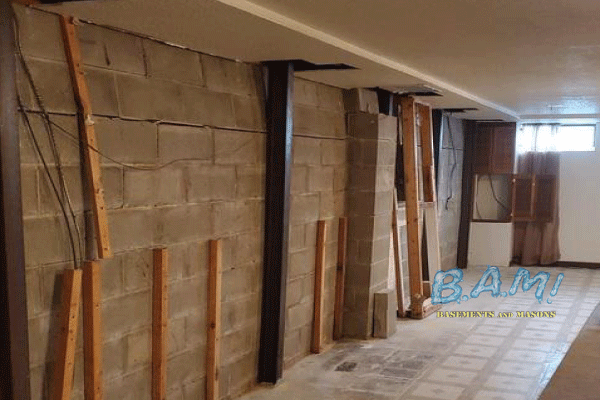Getting The Best Basement Waterproofing To Work
Getting The Best Basement Waterproofing To Work
Blog Article
The smart Trick of Best Basement Waterproofing That Nobody is Discussing
Table of ContentsThe Greatest Guide To Best Basement WaterproofingRumored Buzz on Best Basement WaterproofingUnknown Facts About Best Basement WaterproofingSome Known Questions About Best Basement Waterproofing.About Best Basement Waterproofing
AdvantaClean's skilled experts and specialists will certainly situate the water source. If wall surface or piece cracks are existing, we will certainly inject polyurethane and epoxies right into the cracks and secure the concession, stopping further dampness from getting in.Setting up basement air flow systems, conditioning systems, or basement dehumidifier systems to obtain water out of your cellar. Selecting AdvantaClean's basement waterproofing services is an efficient method to treat dampness and avoid mold from endangering the framework of your home and the wellness of your family.
If there's condensation on the exterior of the aluminum foil, you have high moisture in your cellar. If the aluminum foil has condensation on the inside surface (next to the wall surface), the soil around your house may be naturally damp from a high water table or poor dirt drainage.
You can waterproof just your interior wall surfaces, which may address the problem. Once they dry out, they stick completely to concrete and masonry walls.
The 2-Minute Rule for Best Basement Waterproofing
Concrete waterproof finishes can't be applied to previously painted surface areas; check the label. Understood as densifiers, they are suitable just for wall surfaces that have not been painted or sealed.
But you brush, roll, or spray it on far more heavily one gallon covers just 75 square feet, not the 300 square feet typical with common paint. Water-proof paint is great for do it yourself application. You can use it over painted surface areas, and paint over it once it's cured (one gallon costs $37).
It can set you back $10,000 to $15,000, depending on the job required. Exterior waterproofing involves excavating all around your house to the complete deepness of the foundation wall surfaces, then mounting a waterproof coating or membrane topped by water drainage panels. The panels supply an easy course for water to stream to an exterior French drainpipe at the end of your foundation.
The Greatest Guide To Best Basement Waterproofing
A basement without waterproofing is kind of like that. Your cellar doesn't desire to go through a rainstorm without appropriate protection just as much as you don't want to.

Outside waterproofing is a waterproofing approach that entails securing your home from the exterior. The structure walls are then cleaned, sealed, and covered with a water-proof membrane layer or sealant.
Rumored Buzz on Best Basement Waterproofing
It's a more involved procedure that needs digging up your backyard, which is costly and time-consuming. Outside waterproofing includes getting rid of everything surrounding your house, consisting of patios, driveways, walkways, landscaping, AC devices, decks, and more. If any of the job was done incorrectly and water is still entering your cellar, there isn't much you can do to fix or repair it.
Interior basement waterproofing entails waterproofing from the inside. Any type of water that leakages into your cellar is redirected before it touches your flooring. It's kind of like using a raincoat under your clothes. It involves two points: a water drainage track and a sump pump. It works by securing the within your cellar walls and floors so water that attempts to go into is funnelled out with a sump pump.
It's an effective technique to water resistant your cellar. The drawback of indoor basement waterproofing mostly involves the installation procedure. This technique requires stored products, furnishings, and built-in shelving or closets to be relocated from touching the cellar walls. And during installation, your basement can not be used. The biggest difference in between the two techniques is this: Outside waterproofing is a preventative solution and interior waterproofing is a corrective service.
How Best Basement Waterproofing can Save You Time, Stress, and Money.
In verdict, outside and indoor basement waterproofing are both efficient techniques of protecting your home from water damages. Outside waterproofing develops an obstacle that stops water from entering your home, while indoor waterproofing redirects water that does enter your home. And it website here is necessary to keep in mind that outside waterproofing is a pricey and turbulent setup procedure when contrasted to indoor waterproofing.
Whichever approach you select, make certain you select a reputable and trustworthy specialist for the job. If you have any concerns concerning basement waterproofing, please reach out to us.
You can fill up out our kind below. Best Basement Waterproofing, begin a conversation in the bottom right-hand edge, or call us at 1-800-827-0702
Report this page